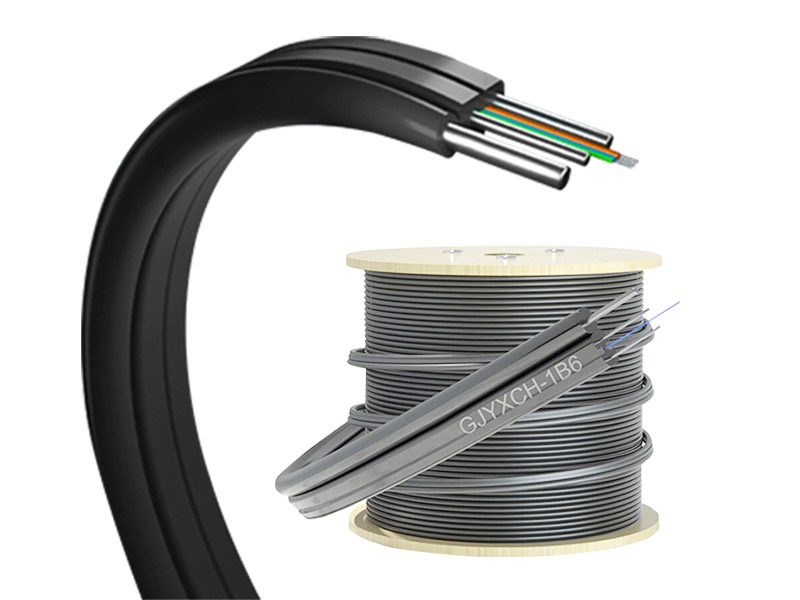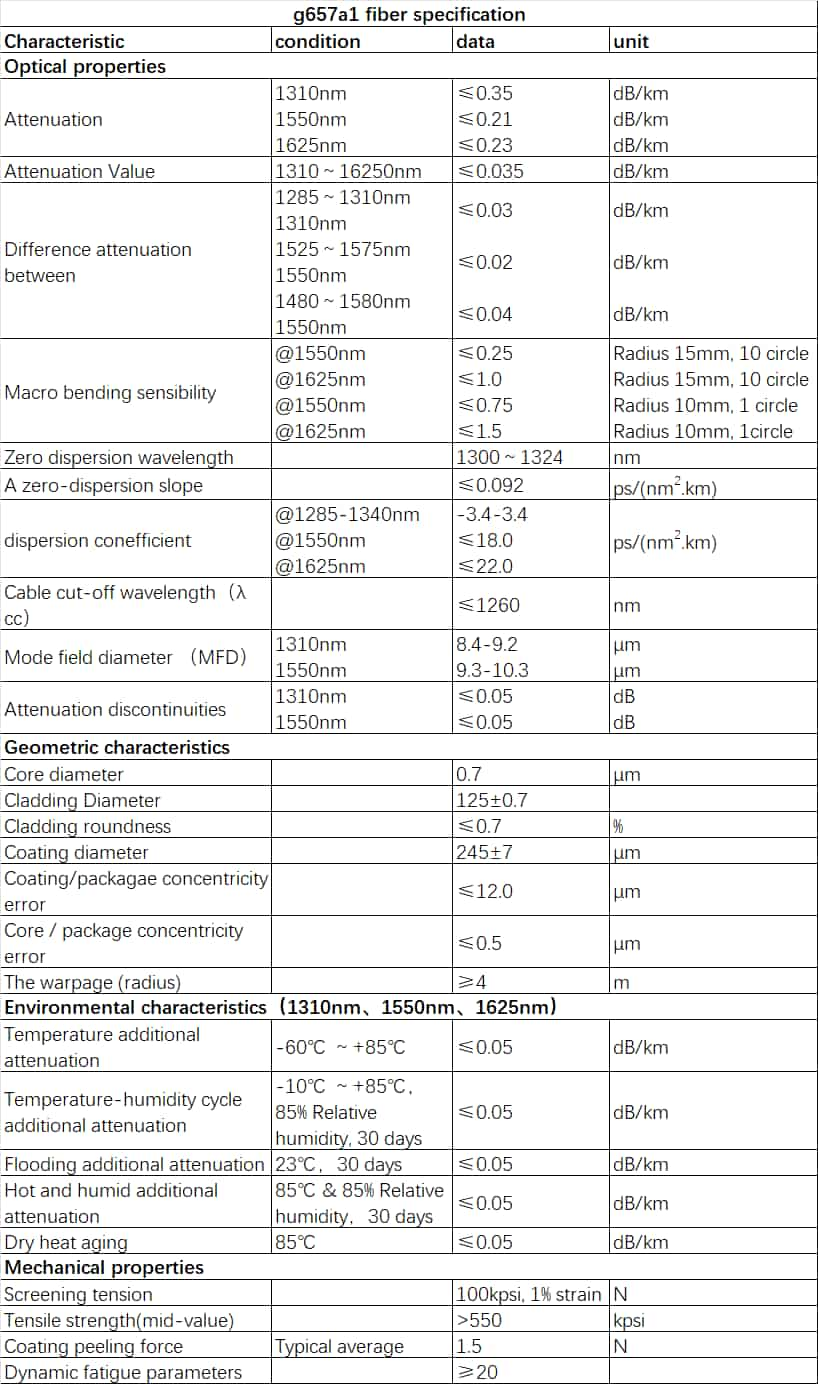
FTTH is mostly a single-core or dual-core structure. It can also be made into a four-core structure. The cross-section is in the shape of an 8. The reinforcement is located at the center of the two circles. It can adopt a metal or non-metal structure. The optical fiber is located in the geometric center of the 8-shaped shape. The optical fiber in the covered optical cable adopts G.657 small bending radius optical fiber, which can be laid with a bending radius of 20mm, and is suitable for entering the house through pipes or open wires in the building.
Strength Member:0.4mm Steel Wire Or 0.5mm FRP
Operating temperature:-40℃~65℃
Jacket Material:PVC、LSZH、PE
Color:Black/Grey/White
Fiber Count:2-12Core
Standards:Comply with standard YD/T 1997-2009, ICEA-596, GR-409, IEC 60794.
Fiber Type: G652D;G655C;G657A1;G657A2;50/125;62.5/125;OM3-150;OM3-300;OM4 As Options

1、Butterfly optical cable has a small radius of curvature, is light in weight, has relatively good bending resistance, is easy to fix, and is easy to terminate in an 86 terminal box.
2、Butterfly-shaped home optical cables come in two forms: non-metallic reinforced components and metal reinforced components. Considering factors such as lightning protection and strong current interference, butterfly optical cables with non-metallic reinforced components should be used indoors.
3、Butterfly optical cables are available in 1-core, 2-core, 3-core, 4-core and other specifications, and the maximum can be 12 cores. Residential users should use single-core cables to access butterfly optical cables; business users can access butterfly optical cables. Designed according to 2-12 core cables. The connection methods include cold splicing and welding. Cold splicing is to prepare the optical fiber end face, install the terminal block and connect it with the flange head.

User indoor wiring:
In the FTTH project,user indoor wiring is the most complex link,and there are many factors to consider. It is necessary to ensure line safety,indoor aesthetics,and construction convenience. Traditional single-core indoor optical cables can no longer meet the indoor wiring requirements of the current FTTH project. As a substitute for traditional indoor optical cables,Weipuxun leather optical cables can adapt to most indoor wiring conditions. For example,they can turn with a bending radius of 20mm,and can withstand the lateral pressure of people stepping on the optical cables,as well as the drag caused by engineering construction. pull. At the same time,with a variety of on-site connectors,on-site termination and docking can be achieved in the shortest time. Therefore,Weipuxun leather optical cable is the best choice for FTTH indoor wiring.
Vertical and horizontal wiring in the building:
Like user indoor wiring,Weipuxun leather optical cable is also suitable for vertical and horizontal wiring in buildings. Horizontal cabling does not have very strict requirements on optical cables,but vertical cabling must require the optical cable to have a certain tensile strength. Weipu Xun’s leather optical cable can withstand a maximum short-term pull force of 200 Newtons and a long-term pull force of 100 Newtons. Therefore,it can ensure the construction safety and stable performance of vertical wiring of leather optical cables within a certain height range.
Self-supporting overhead home wiring:
The self-supporting“8”figure optical cable has a metal suspension unit,so it has stronger tensile strength and can withstand a span of 50 meters. Optical cables are laid in an overhead manner outdoors. Before entering the home,the metal suspension wire unit is cut and fixed on a special holder. The remaining optical cables are stripped of the metal suspension wires and introduced into the room using leather optical cables.
Pipe entry wiring:
Because pipe mapping optical cables are harder and have higher tensile strength than leather cables,and the cables contain water-blocking materials that can reduce outdoor rainwater erosion,they are more suitable for longer-distance outdoor pipeline laying. Weipuxun pipeline mapping optical cable adopts an all-non-metallic structure,thus avoiding the possibility of lightning entering the room. After the optical cable is installed in the home, its outer sheath,water-blocking material and reinforcement are peeled off,and the middle coated optical cable is directly used for indoor wiring. It inherits all the advantages of indoor wiring of the coated optical cable and at the same time reduces the outdoor and indoor optical cable connections.